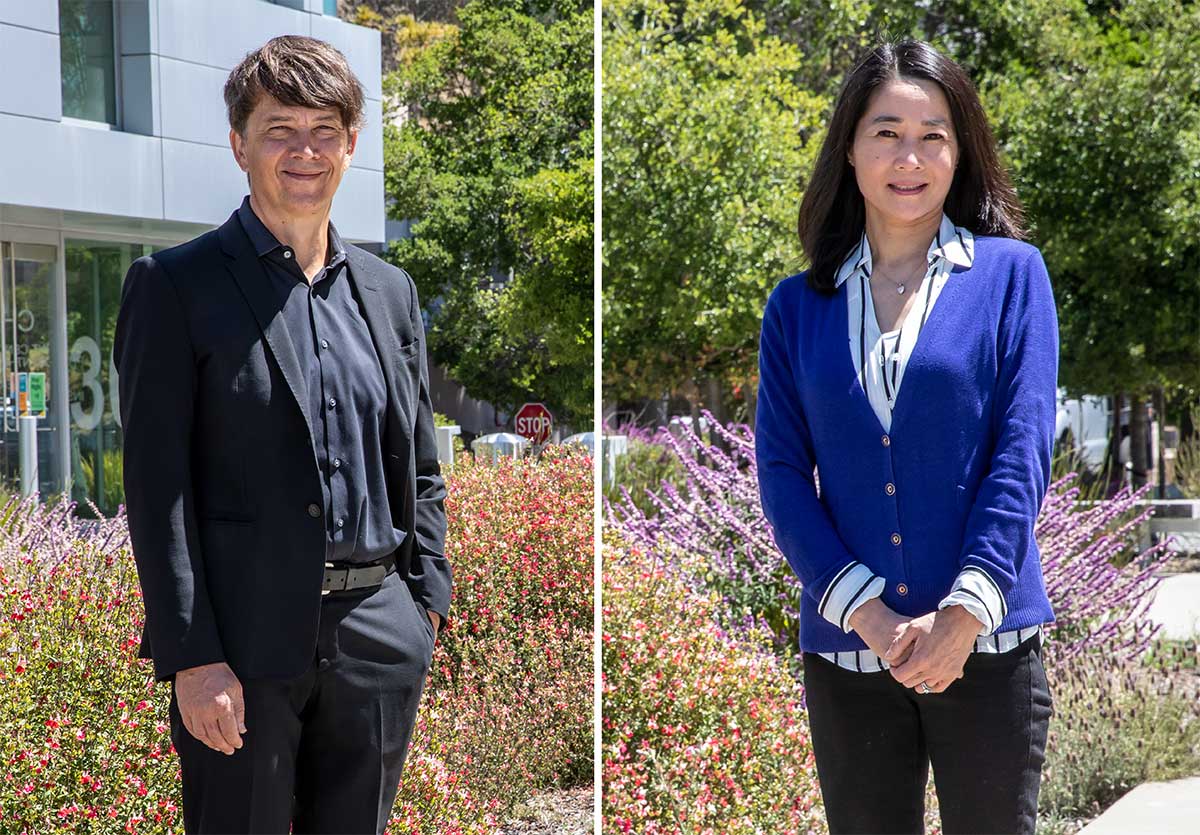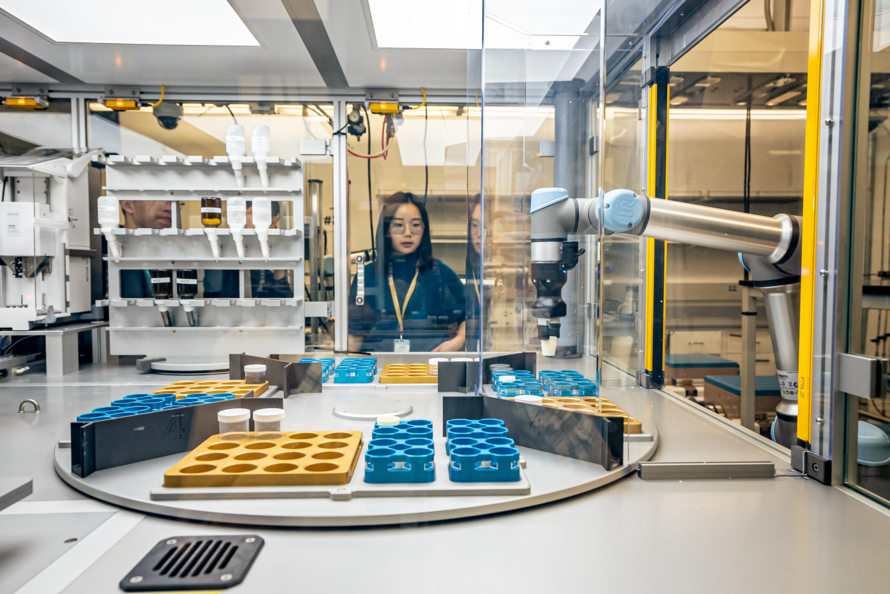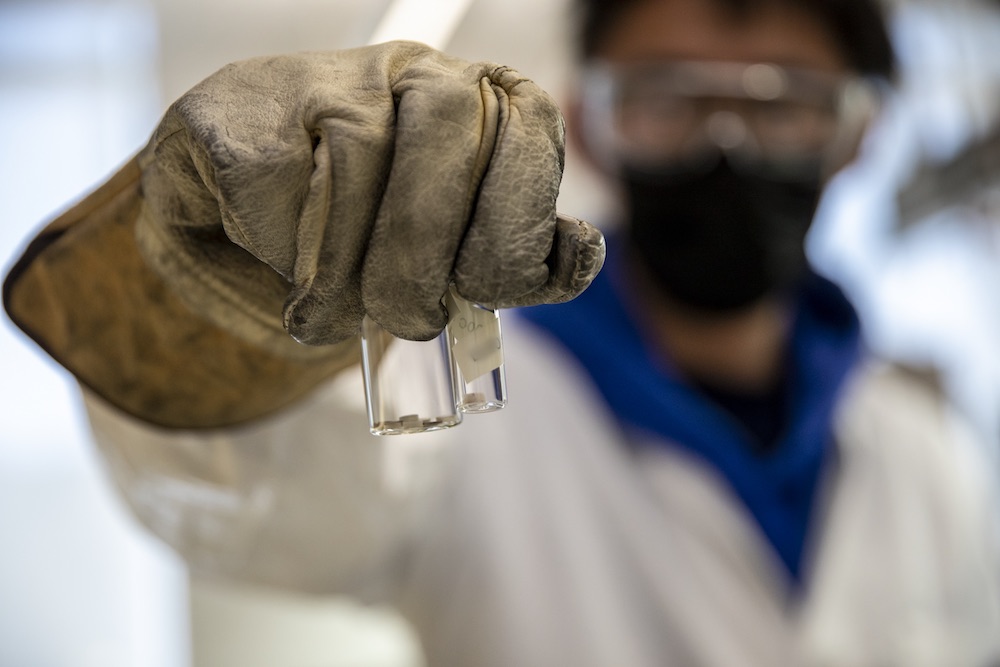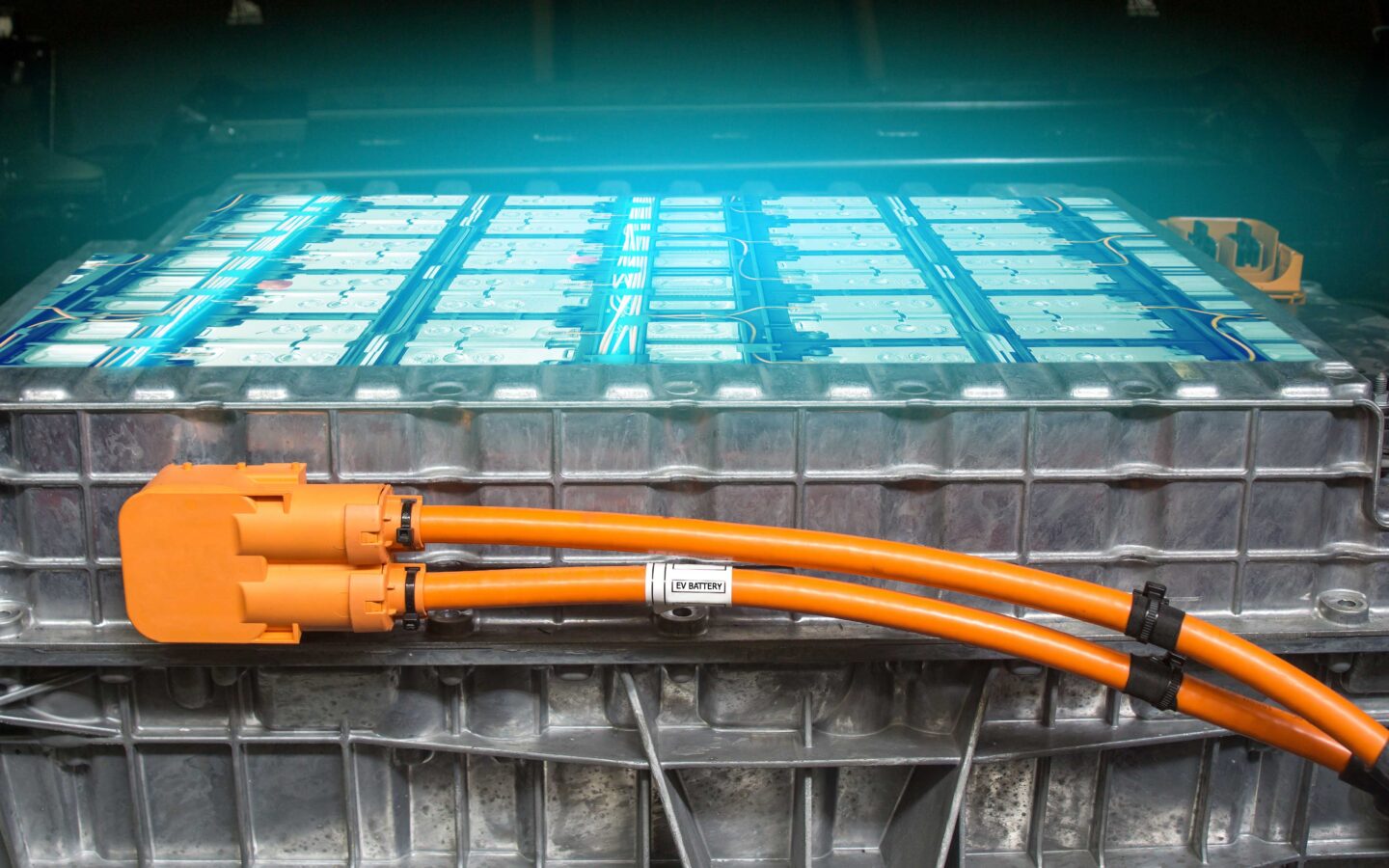Key Takeaways
- A new battery material called disordered rock salt (DRX) could pave the way for replacing gasoline vehicles with electric vehicles at a faster rate.
- DRX cathodes could provide lithium-ion batteries with higher energy density than conventional cathodes made of nickel and cobalt and make batteries for electric vehicles more sustainable.
- New battery materials typically take decades to commercialize, but researchers hope to demonstrate commercial-ready DRX cathodes in just a few years.
A consortium of the nation’s best battery scientists, led by Lawrence Berkeley National Laboratory (Berkeley Lab), will accelerate the commercialization of a new family of battery cathode materials called DRX or “disordered rock salt.”
DRX cathodes could provide batteries with higher energy density than conventional lithium-ion battery cathodes made of nickel and cobalt, two metals that are in critically short supply.
The U.S. Department of Energy (DOE) has made it a priority to find ways to reduce or eliminate the use of cobalt in batteries. In support of that initiative, the DRX Consortium is focused on making DRX cathodes made of manganese or titanium, which are both more abundant and cheaper than nickel or cobalt. Lithium batteries made with DRX cathodes could safeguard the automobile industry and therefore consumers from higher prices spurred by supply constraints.
“DRX cathodes can be made with almost any transition metal instead of nickel and cobalt. That versatility is key if we want to replace gasoline vehicles with electric vehicles,” said principal investigator Gerbrand Ceder. The Berkeley Lab faculty senior scientist and UC Berkeley professor of materials science and engineering is co-leading the DRX Consortium with fellow battery scientist Guoying Chen at Berkeley Lab.

Berkeley Lab battery scientists Gerbrand Ceder (left) and Guoying Chen are co-leading the DRX Consortium. (Credit: Marilyn Sargent/Berkeley Lab)
Formed last fall, the DRX Consortium – which includes a team of approximately 50 scientists from Berkeley Lab, SLAC National Accelerator Laboratory, Pacific Northwest National Laboratory, Argonne National Laboratory, Oak Ridge National Laboratory, and the University of California at Santa Barbara – was awarded $20 million from the Vehicle Technologies Office in DOE’s Office of Energy Efficiency and Renewable Energy. The funding – allocated in $5 million yearly increments through 2025 – will allow the consortium to develop DRX battery cathodes that could perform just as well if not better than the NMC (nickel-manganese-cobalt) cathodes used in today’s lithium-ion batteries.
“DRX offers more sustainable, more abundant, and cheaper mineral sources for battery cathodes,” Ceder said. “The lithium-ion battery is a really good energy storage technology, but to stay relevant, it will need to grow toward higher production of multiple terawatt hours per year. Without DRX, lithium-ion batteries would require enormous amounts of nickel and cobalt if we stay with current technologies.”
“DRX could be the go-to material for battery cathodes,” added Chen. “We already have the advantage of cost and resources. Now all we have to do is improve performance.”
Decarbonizing transportation with DRX
DRX is still a very young technology – Ceder and his team developed DRX just less than 10 years ago, in 2014, as a response to a rapidly growing lithium-ion battery industry. New battery technologies typically take 20 to 30 years to mature. But DRX is on an unusually fast track toward commercialization.
Ceder and Chen demonstrated DRX’s potential during a four-year program called the “Deep Dive,” which was also funded by the DOE Vehicle Technologies Office. That program ended in 2022, and the consortium formed soon after with the goal of demonstrating commercial-ready DRX cathodes in less than 5 years.
This urgency comes in the midst of a clean energy transition. The United States aims to make half of all new cars sold in 2030 zero-emissions vehicles, including battery electric, plug-in hybrid electric, or fuel cell electric vehicles. In California, all new cars must be zero-emission vehicles beginning in 2035.
To achieve this ambitious goal, Ceder and Chen formed the DRX Consortium, enlisting top battery scientists from across the country and national lab system to help.
Researchers at the Department of Energy’s National Energy Research Scientific Computing Center (NERSC) will help the team narrow down the best combination of manganese and titanium through computer modeling. Researchers from Oak Ridge National Laboratory and Argonne National Laboratory will work on chemical synthesis and scale up the materials for industry. New DRX-compatible electrolytes will be developed at Pacific Northwest National Laboratory. And researchers from Berkeley Lab’s Molecular Foundry, SLAC National Accelerator Laboratory, and UC Santa Barbara will assist with materials characterization.
“DRX cathodes can be made with almost any transition metal instead of nickel and cobalt. That versatility is key if we want to replace gasoline vehicles with electric vehicles.”
– Gerbrand Ceder, Berkeley Lab faculty senior scientist, Materials Sciences Division
A pioneer in computational materials discovery, Ceder and his team discovered DRX through computer model experiments, many of which were performed at NERSC.
Vince Battaglia and his team at Berkeley Lab will test out Ceder’s DRX cathode “recipes” by fabricating dozens of DRX coin-cell batteries with various formulations of titanium or manganese. The idea is to improve the material’s electronic conductivity, which is crucial to ensuring that a DRX lithium-ion battery not only has high energy density but also a high cycle life (the number of times a battery can charge and discharge before it begins to break down).
“In my lab we can test hundreds of lithium-ion coin cells at a time. We try to make batteries in the best environments possible so that we can really understand the performance of the material itself. It’s scaled up to mimic the fabrication processes that would actually work in the field,” Battaglia said.
This latest chapter in the development of DRX comes at a pivotal moment as nations around the world search for actionable solutions to prevent global warming from worsening.
The transportation sector – one of the biggest emitters of greenhouse gases in the world – makes up half of California’s greenhouse gas emissions, a third of U.S. emissions, and a fifth of global emissions. In California, tailpipe emissions from gasoline-powered vehicles are the biggest source of greenhouse gas emissions.
Climate scientists say that replacing gasoline-powered vehicles with electric vehicles could be one of the most effective ways to rapidly decarbonize the transportation sector.
According to a recent report by the United Nations’ Intergovernmental Panel on Climate Change, the world will soon see a warming of 1.5 degrees Celsius (2.7 degrees Fahrenheit) above pre-industrial levels unless greenhouse gas emissions are slashed in half by 2030.
Ceder says that DRX could play a key part in decarbonizing transportation. “DRX is a very promising technology that could provide reliable yet inexpensive and abundant energy storage. But this has to happen soon – not in 30 years, but now. We don’t have time to wait – and the DRX Consortium will help us get there,” he said.
The Molecular Foundry and NERSC are DOE Office of Science user facilities at Berkeley Lab.
# # #
Founded in 1931 on the belief that the biggest scientific challenges are best addressed by teams, Lawrence Berkeley National Laboratory and its scientists have been recognized with 16 Nobel Prizes. Today, Berkeley Lab researchers develop sustainable energy and environmental solutions, create useful new materials, advance the frontiers of computing, and probe the mysteries of life, matter, and the universe. Scientists from around the world rely on the Lab’s facilities for their own discovery science. Berkeley Lab is a multiprogram national laboratory, managed by the University of California for the U.S. Department of Energy’s Office of Science.
DOE’s Office of Science is the single largest supporter of basic research in the physical sciences in the United States, and is working to address some of the most pressing challenges of our time. For more information, please visit energy.gov/science.



